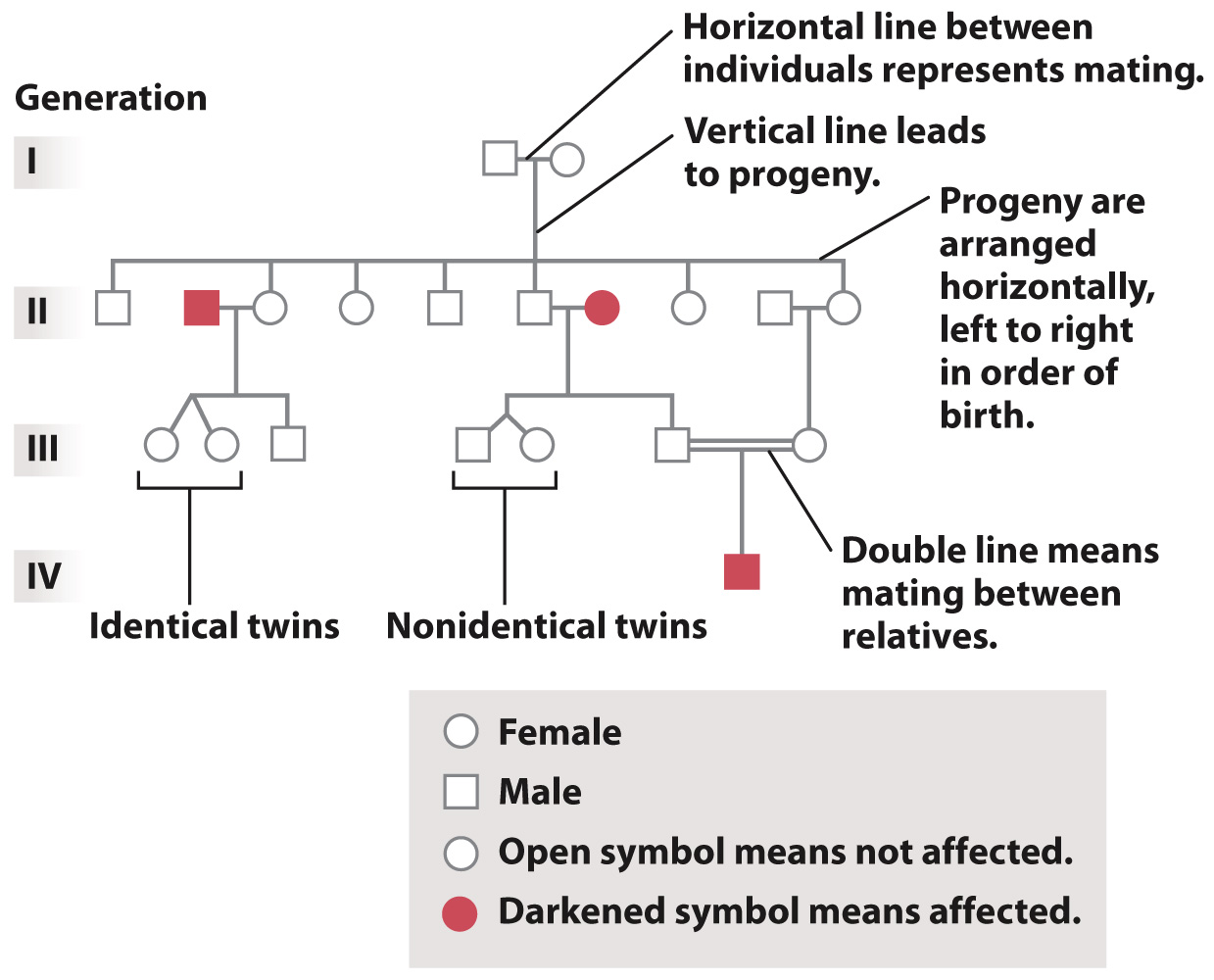16.5 Patterns of Inheritance Observed in Family Histories
Segregation of alleles takes place in human meiosis just as it does in peas and most other sexual organisms. The results are not so easily observed as in peas, however, for several reasons. First, humans do not choose their mating partners for the convenience of biologists, and so experimental crosses are not possible. Second, the number of children in human families is relatively small, and so the Mendelian ratios are often obscured by random fluctuations due to chance. Nevertheless, in many cases the occurrence of segregation can be observed even in human families. The patterns are often easiest to spot for inherited traits that are rare because in those cases the mutant alleles occur only in affected individuals and their close relatives (who may not themselves be affected).
In studying human families, the record of the ancestral relationships among individuals is summarized in a diagram of family history called a pedigree. Some typical symbols used in pedigrees are shown in Fig. 16.17. The same patterns of dominance and recessiveness that Mendel observed in his pea plants can be seen in some pedigrees. Over the next few sections, we’ll see how to recognize telltale features of a pedigree that reveal the genotypic nature of a trait.
